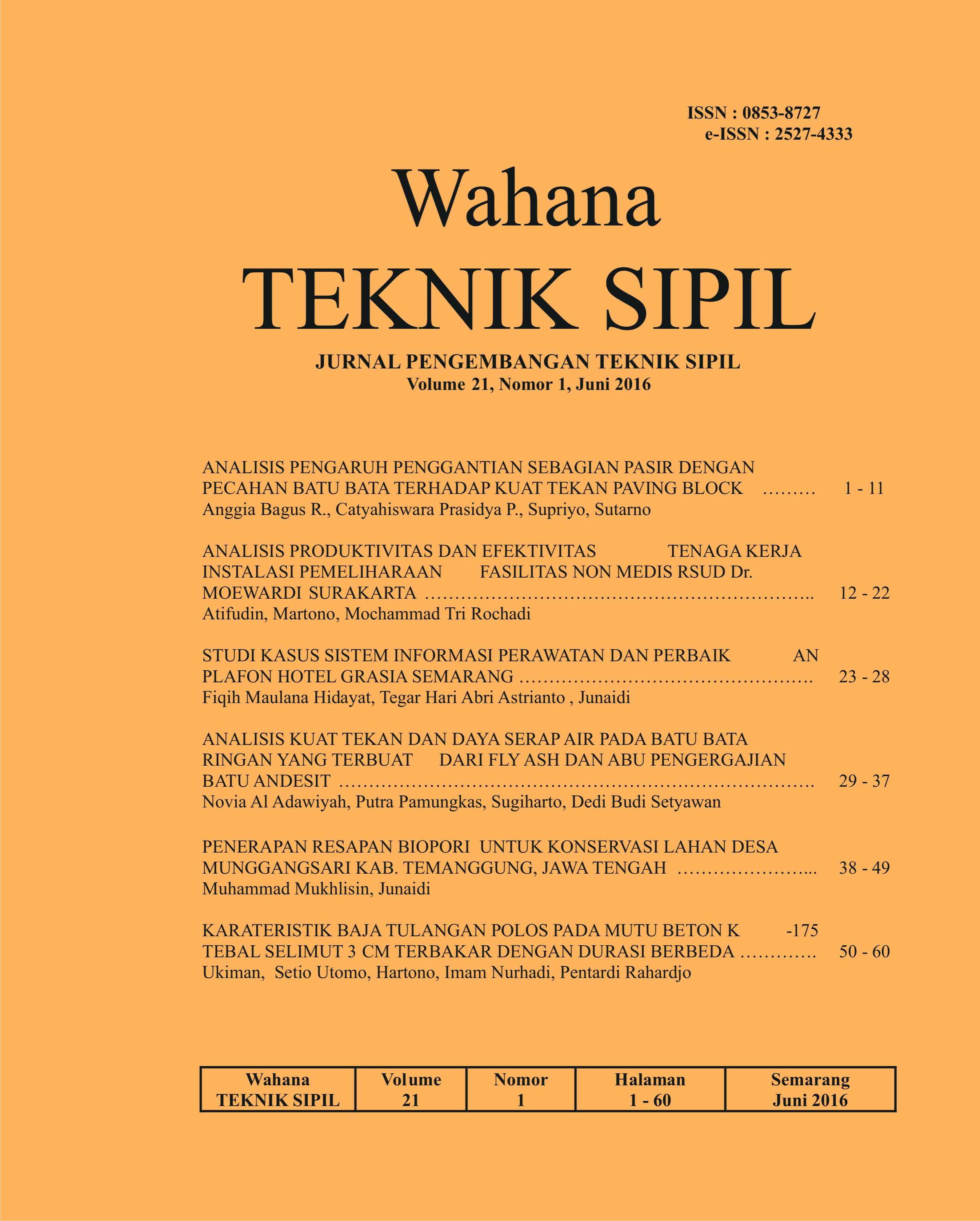Analisis Kuat Tekan Dan Daya Serap Air Pada Batu Bata Ringan Yang Terbuat Dari Fly Ash Dan Abu Pengergajian Batu Andesit
DOI:
https://doi.org/10.32497/wahanats.v21i01.823Keywords:
cellular lightweight concrete (CLC), compressive strength, water absorption, fly AshAbstract
The research is do to analize the compressive strength and water absorption in the CLC lightweight brick made with a mix of fly ash and the ashes of andesit sawed stones and also to know if waste fly ash and the ashes of andesit sawed stones can be used as mixure of CLC lightweight bricks. The method used in this research that is by making light brick CLC with replacing sand material to the ashes of andesit sawed stones and fly ash substitution of 5%, 7%, 10%, 15%, 17% and 20% of the weight of the whole material. Lightweight brick that has been curing for 7, 14 and 28 days and then tested to obtain the compressive strength and water absorption from lightweight brick. Results of the research showed the largest compressive strength of CLC lightweight brick at the age of 7 days is 6 kg/cm2 on the rate of fly ash 20%. At the age of 14 days, the largest compressive strength value of CLC is 12 kg/cm2 on the rate of fly ash 20%, at the age of 28 days, the largest compressive strength value of CLC is 19.5 kg/cm2 on he rate of fly ash 20%. Water absorption of CLC lightweight brick on average at the age of 14 days is 18.54 gr/dm2/min, average water absorption of CLC lightweight brick at the age of 28 days is 12.44 gr/dm2/min, still enter into terms that reco mended with a maximum of 20 gr/dm2/min.
Downloads
Published
Issue
Section
License
Authors who publish with this journal agree to the following terms:Authors retain copyright and grant the journal right of first publication with the work simultaneously licensed under a Creative Commons Attribution License that allows others to share the work with an acknowledgement of the work's authorship and initial publication in this journal.
Authors are able to enter into separate, additional contractual arrangements for the non-exclusive distribution of the journal's published version of the work (e.g., post it to an institutional repository or publish it in a book), with an acknowledgement of its initial publication in this journal.
Authors are permitted and encouraged to post their work online (e.g., in institutional repositories or on their website) prior to and during the submission process, as it can lead to productive exchanges, as well as earlier and greater citation of published work (See The Effect of Open Access).






